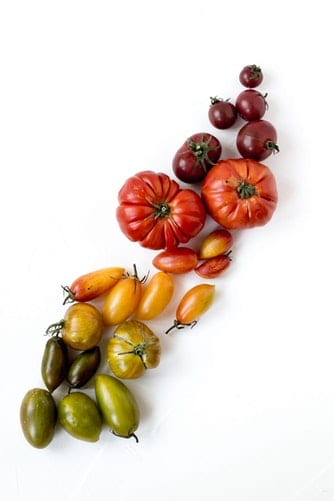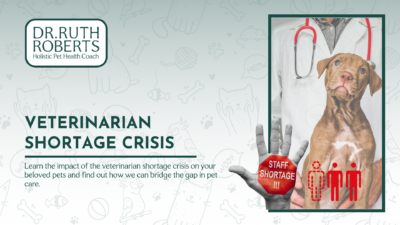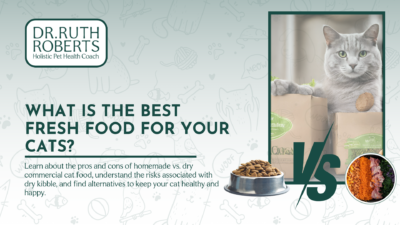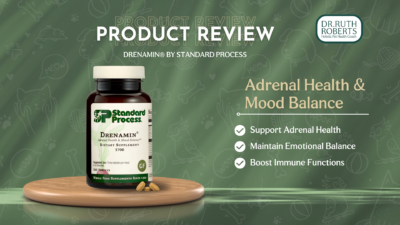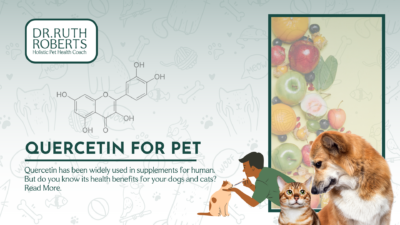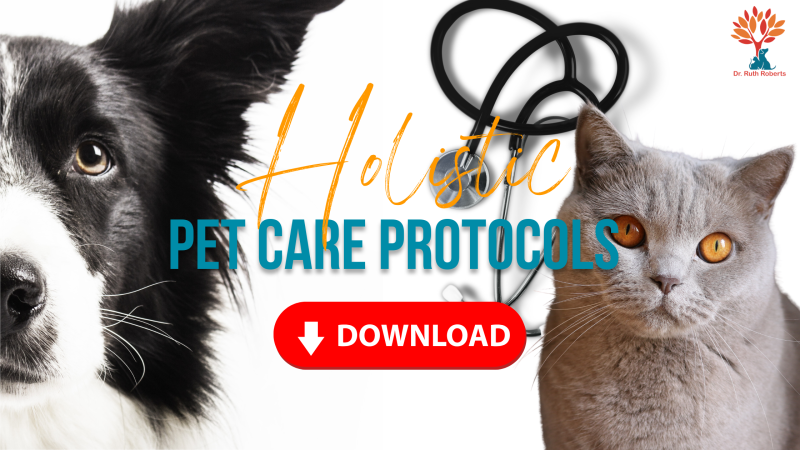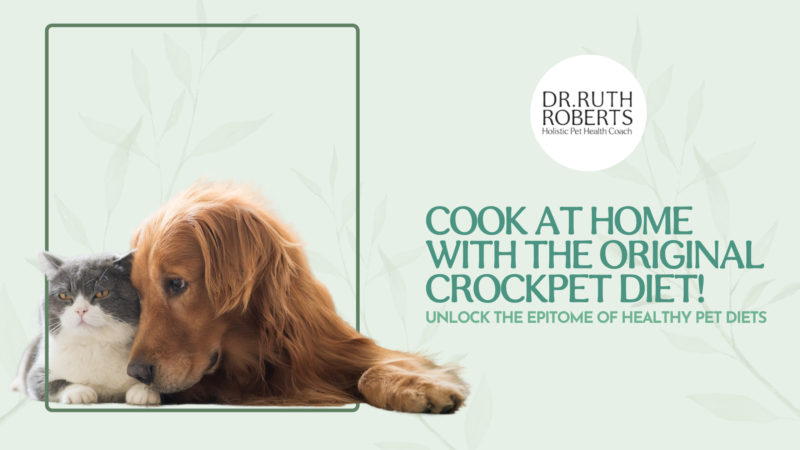
Cooking at home with The Original CrockPet Diet gives you access to the epitome of healthy pet diets.
But understanding some basics of food energetics will help you choose the right ingredients, just for your pet
I am the Original Holistic Pet Health Coach, and am now training passionate pet parents, and pet professionals to be Certified Holistic Pet Health Coaches so that more pets can be helped holistically.
The core concept of Food or Diet Therapy, is achieving balance. In most western countries, our idea of a balanced diet is one that includes a mix of different food groups. While this type of variation is a good idea, it does not always lead to a well-balanced diet. Food energetics and balanced, healthy pet diets (or any healthy diet) go hand-in-hand.
If we look at the concept of a balanced diet from a Traditional Chinese point of view (and I certainly do), we must consider the energetic nature of the food. Food energetics looks at how the ingestion of each food affects the body. Finding the right foods, to perform specific functions, is the main mission behind Food Therapy and The Original CrockPet Diet.

Warming vs. Cooling Foods
In Traditional Chinese Medicine (the base of food therapy), foods are mainly characterized as either warming or cooling. Good health requires an ever-shifting balance of the two. Warming foods are generally dense in macronutrient (protein, carbohydrate or fat) calories. They tend to provide high amounts of thermal energy, stimulating and speeding up metabolic processes. Cooling foods, on the other hand, are somewhat less calorie dense. They are often higher in water content and rich in micronutirents (vitamins, minerals and other elements essential for healthy functioning.
These cooling foods will also slow metabolic processes, exerting incredible anti-inflammatory properties. Not surprisingly, the effect these foods have on the temperature of the body are exactly as their names suggest. Warming foods will warm the body, as cooling foods have the opposite effect. If you’ve ever found yourself craving a slice of watermelon or a juicy peach on a warm summer day, it’s no coincidence – your body is trying to help cool itself.
It’s important to note that there are variations and exceptions within both of these categories, and also many other components to food energetics (more on that to come).
Getting a read on temperature
Don’t get down on yourself if you need help figuring out which foods are considered warm or cool. The many components of food energetics and Chinese Medicine are not exactly laid out in laymen’s terms, and often take many years of careful study. However, there are a few basics to keep in mind that may help you confidently choose one food over another.
Animal proteins tend to be considered warm foods. They provide high amounts of protein, and considerable amounts of fat (depending on your selected cut). However, it’s important to note the variations in this category, as they are somewhat significant. For example, turkey and pork are on the cooling end of the spectrum, while chicken and beef are much warmer. White fish can be considered a cooler protein, but salmon and tuna are rather warm, and they contain higher concentrations of fat and protein, respectively.
It’s worth noting that most grains, legumes, dairy and eggs are generally neutral on the scale. Adding these to your pet’s diet in moderation is usually fine, though grains can cause an inflammatory response in pets with sensitivities. If you’re unsure about your pet’s status with these, or any other foods, consider asking your veterinarian about food allergy testing to be sure.
Cooling foods are generally going to fall into the plant category, including both fruits and vegetables, but there is a huge margin for variation. What I love about this, though, is that there are some rather fun ways to distinguish which end of the spectrum individual foods fall on.
The very way a fruit or vegetable grows will actually tell you a lot about its energy! Foods that grow below ground and take longer to grow (think potatoes, radishes or carrots) are warmer than those that grow above ground and grow quickly. Leafy greens, green beans, cucumbers and most fruits are some of my favorites that fall into the cool club. Cucumbers are a crunchy and hydrating snack for pets.
Taste the rainbow... Really.
Many of us know that including a variety of colors in our diet also means you’re getting a nice variety and balance of nutrients. But there is more truth behind that than you may realize. Fruits and vegetables that come in cool colors – like green, blue or purple – are likely cooling foods. On the other hand, those that grow in warm colors such as yellow, orange or red, are warmer than their cool colored counterparts.
Many of us know that including a variety of colors in our diet also means you’re getting a nice variety and balance of nutrients.
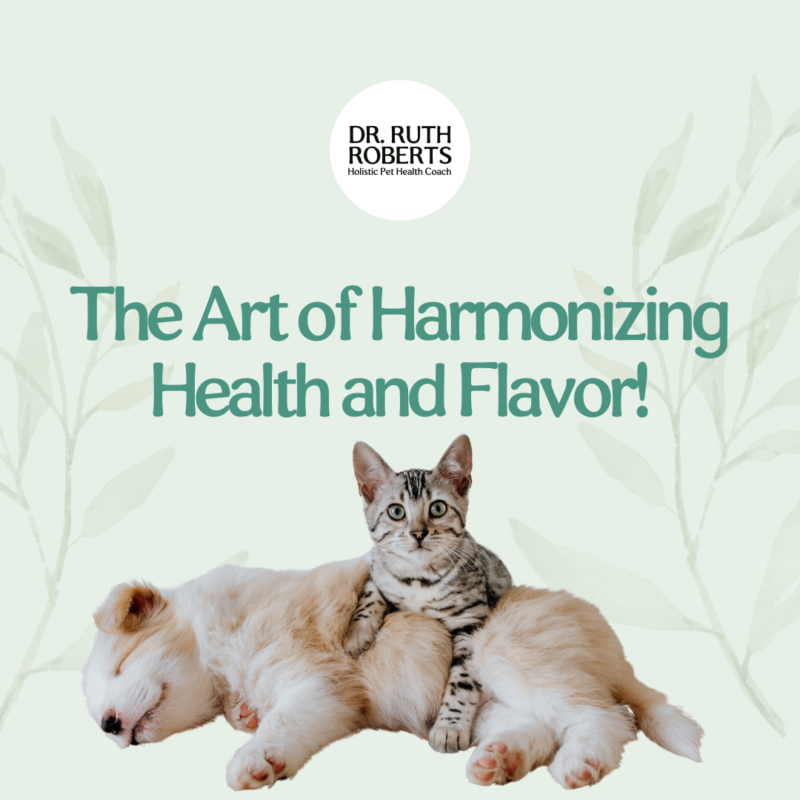
But there is more truth behind that than you may realize. Fruits and vegetables that come in cool colors – like green, blue or purple – are likely cooling foods. On the other hand, those that grow in warm colors such as yellow, orange or red, are warmer than their cool colored counterparts.
This color association can help you easily pinpoint where a food might fall on the heat spectrum. It will also help you decipher the smallest variations that occur within a category. For example, all melon is considered cooling; but honeydew may be slightly more so than its orange cousin, cantaloupe. Even a green apple will be slightly cooler than a red one!
Remember that this is just a fun guideline, and not a scientific method for determining the energetics of a food. Lots of exceptions and variations will occur.
Seasonality and Climate
When you’re in doubt, consider the season or climate in which a food grows best, to help you determine its likely property. Mother Nature devised a plan to help keep our bodies balanced all year long. In-season foods tend to compliment the prevailing season. They help the body adapt to the climate, and even give the immune system a boost, helping fight off illnesses that are typical that time of year.
Cooling foods, such as summer squash and cucumbers, ripen in the summer. These foods help to cool the body, providing fluids and even extra antioxidants. In addition, fruits that grow in a hot climate will be more cooling that those that grow in a cooler climate. Veggies that mature in winter, such as beets, will be more warming. These foods also tend to provide more calories than their summery counterparts, and a different set of phytonutrients.
Buy Local
By now, you’ve probably guessed that I am a HUGE fan of using locally sourced foods – produce especially. When you’re buying local produce, you never have to wonder if it’s in-season or fresh. That takes the guesswork out of a lot of your shopping, and you know you are buying “whole” foods.
Did you know that a fruits and vegetables tend to begin losing nutrients right after they are harvested? This means that the longer the produce goes between the farm and your pet’s bowl, the less nutrient dense it becomes (but those whole foods are better than processed foods, no matter where you get them). Buying local takes care of that issue!
But there’s so much to be said for the use of locally farmed produce. By doing something that’s already part of your weekly routine, you can support your local economy, your pet’s health (AND your own) and even help the environment. Using locally grown produce reduces the carbon footprint of those foods, and your own, as no packaging or shipping is required!

Food energetics is about balance
Remember, healthy pet diets are based on balance – not a scientific formula. You’ll notice that some of the ingredients in The Original CrockPet Diet are warm foods, and lots of them (especially the veggies we ask you to add) are cooling foods. This is because you must use both to achieve balance for your pet. Even a pet who runs very hot must have some warm foods in their diet. Remember, these foods provide most of the macronutrients needed for energy and healthy cell building and maintenance.
Regularly rotating the ingredients in your pet’s batches of The Original CrockPet Diet is the best way to ensure they’re getting a great balance of nutrients. If you find a particular ingredient works well or doesn’t work at all for your pet, take note. You may find a pattern that helps you identify your pet’s specific needs, or just make them the tastiest possible recipe.
If you have questions about an ingredient for your pet, never hesitate to reach out and ask for help. Members of The Original CrockPet Diet Community have exclusive access to a private Facebook group, where help is only a click away. You can also join in Dr. Ruth’s Live Facebook broadcast, every Thursday at 12:30pm EST, and feel free to ask away. We’re also available for assistance via email, at drruthroberts@drruthroberts.com.
As always, remember: Your pet’s best health begins in the bowl!

